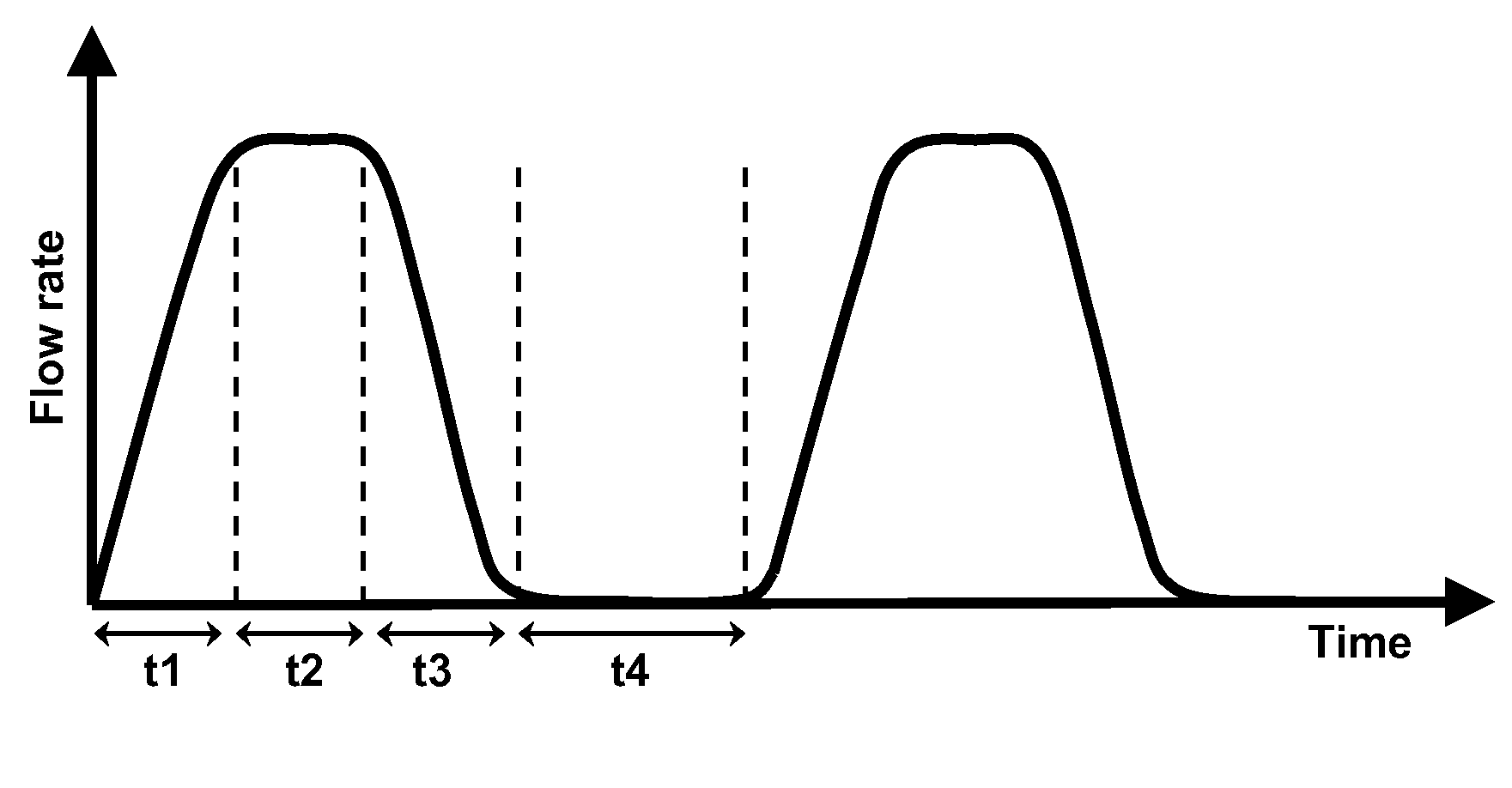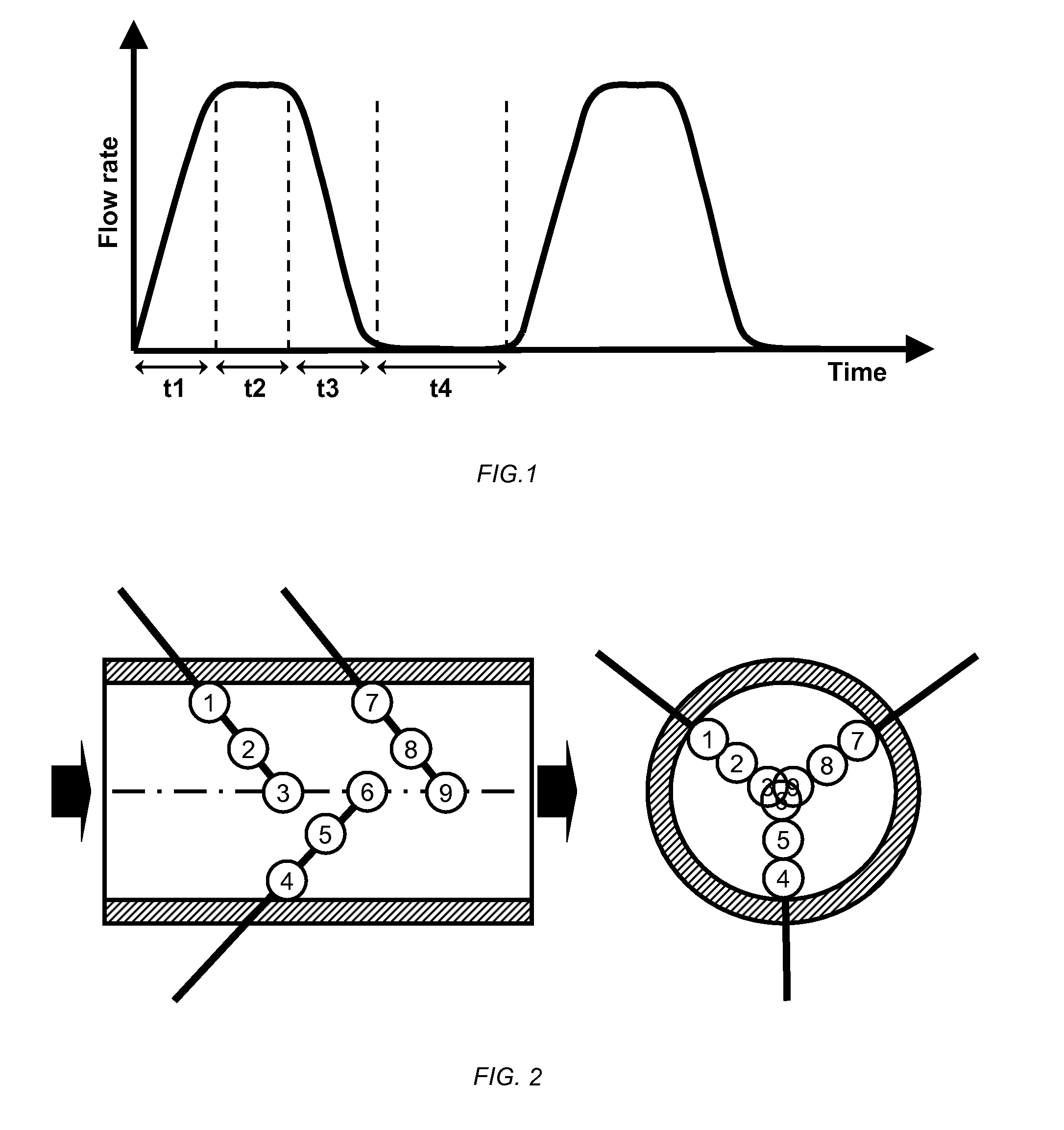In-line heating process
a heating process and heating chamber technology, applied in the field of in-line heating process, can solve the problems of affecting the quality of both the liquid base and the pieces, affecting and most pumpable food products inside the flow passage exhibit marked residence time distribution, etc., to achieve the largest temperature non-uniformity, the effect of improving the longevity of the pump and maximizing the potential
- Summary
- Abstract
- Description
- Claims
- Application Information
AI Technical Summary
Benefits of technology
Problems solved by technology
Method used
Image
Examples
example 1
Application to Model Liquids
[0032]The effect of the current invention will be demonstrated using a model liquid heated in the stationary and the proposed instationary flow regime over a wide range of viscosities.
a—Preparation & Properties of the Model Fluid
[0033]Six model fluids were prepared having the following compositions (table 1).
[0034]
TABLE 1Composition and conductivity of the model fluids employed. Kinematicviscosity ν measured for all fluids at a shear rate γ = 100 s−1.fluid numberstarch (g / l)NaCl (g / l)Mushr. (g / l)ν (Pa s)12051 2 × 10−62255133051435515405156 × 10−664551
[0035]For each case a batch of 300 kg was prepared following the customary steps of dispersing and activating the starch (Purity HPC) in potable water (5 minutes at 90° C.), adding and dissolving the salt, mixing in the tracer mushroom particles (0.2-1 cm size) and cooling down to a temperature of 50° C. The kinematic viscosity (ν) of the prepared model fluids was measured off-line in a roto-viscometer and fe...
PUM
 Login to View More
Login to View More Abstract
Description
Claims
Application Information
 Login to View More
Login to View More - R&D
- Intellectual Property
- Life Sciences
- Materials
- Tech Scout
- Unparalleled Data Quality
- Higher Quality Content
- 60% Fewer Hallucinations
Browse by: Latest US Patents, China's latest patents, Technical Efficacy Thesaurus, Application Domain, Technology Topic, Popular Technical Reports.
© 2025 PatSnap. All rights reserved.Legal|Privacy policy|Modern Slavery Act Transparency Statement|Sitemap|About US| Contact US: help@patsnap.com


